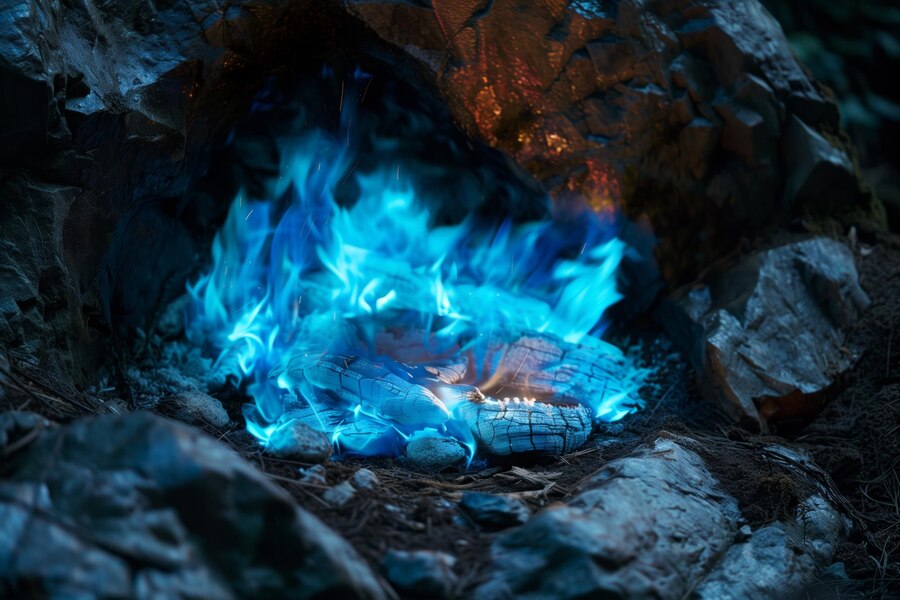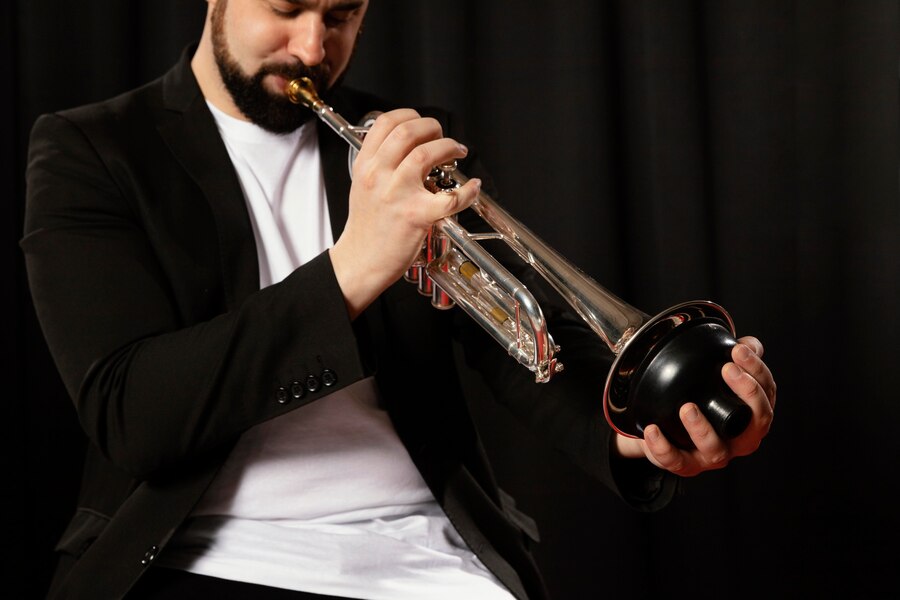ENTERTAINMENT
Blue Fire Wilderness Therapy: A Path to Healing and Growth

Wilderness therapy has gained increasing attention as a powerful tool for individuals struggling with mental health, behavioral issues, or substance abuse. Among the various wilderness therapy programs available today, Blue Fire Wilderness Therapy stands out due to its unique approach, high success rates, and dedication to helping participants overcome challenges in their lives. This article will explore what Blue Fire Wilderness Therapy is, how it works, its benefits, and why it might be the right choice for those in need of healing and personal development.
What is Blue Fire Wilderness Therapy?
Blue Fire Wilderness Therapy is an innovative therapeutic program designed to help adolescents, young adults, and their families navigate complex life challenges through immersive, nature-based experiences. The program combines elements of outdoor adventure, experiential learning, and individual counseling to address mental health issues, emotional struggles, and behavioral problems.
Located in scenic regions, Blue Fire Wilderness Therapy takes participants on a journey where they disconnect from their everyday environment and engage deeply with nature. This provides a setting for personal reflection, problem-solving, and growth. The wilderness serves as a metaphor for life’s challenges, encouraging participants to face difficulties head-on and learn resilience.
How Blue Fire Wilderness Therapy Works
The program is designed around the principles of adventure therapy, which uses outdoor activities as a medium to address psychological and emotional challenges. At Blue Fire, participants are not simply “out in the wild” for the sake of adventure—they undergo structured, therapy-driven activities that aim to build skills, address underlying issues, and foster a sense of community and personal responsibility.
- Therapeutic Counseling: Each participant works with licensed therapists who help them explore the emotional, psychological, and behavioral issues contributing to their struggles. Therapy sessions are tailored to the individual’s needs and may include one-on-one, group, and family therapy.
- Outdoor Adventure: Physical activities such as hiking, camping, rock climbing, and wilderness survival are integral parts of the program. These challenges help individuals build confidence, resilience, and teamwork, all while offering them a break from the pressures of their daily lives.
- Life Skills Development: Participants also engage in life skills training, where they learn important tools for managing stress, communicating effectively, setting goals, and resolving conflicts. These skills are crucial for long-term success and well-being.
- Family Involvement: Blue Fire recognizes that lasting change often involves family dynamics. The program includes family therapy sessions to address interpersonal issues and improve communication, ensuring that participants and their families are equipped with the tools to support one another in the future.
Who Can Benefit from Blue Fire Wilderness Therapy?
Some common struggles that Blue Fire can address include:
- Adolescents and Young Adults Struggling with Anxiety or Depression: The isolation and structured nature of wilderness therapy can help individuals process their emotions, gain clarity, and reduce feelings of isolation.
- Addiction or Substance Abuse: Many people who battle addiction find that traditional treatment methods may not be enough. Wilderness therapy helps them confront their addiction in an unconventional but highly effective way, often providing breakthroughs that are difficult to achieve through conventional therapy alone.
- Behavioral Issues: Whether dealing with oppositional defiant disorder, ADHD, or conduct issues, Blue Fire’s combination of therapy and outdoor adventure helps participants gain better self-regulation and life management skills.
- Family Dynamics: Sometimes, the source of an individual’s struggles lies within the family structure. Blue Fire’s family therapy component can improve relationships, communication, and conflict resolution, which is essential for sustainable healing.
Benefits of Blue Fire Wilderness Therapy
1. Connection with Nature
Nature has a therapeutic effect on the mind and body. Spending time outdoors allows participants to disconnect from the distractions of modern life, including social media, academic pressures, and unhealthy environments. The natural setting fosters a sense of peace, self-reflection, and emotional restoration. Research has consistently shown that outdoor therapy can reduce stress, improve mood, and enhance overall well-being.
2. Experiential Learning
Rather than traditional classroom-based therapy, Blue Fire Wilderness Therapy emphasizes learning through experience. This approach allows participants to put lessons into practice immediately and directly experience the impact of their actions. Overcoming a challenging hike or surviving a difficult night in the wilderness becomes a metaphor for overcoming life’s struggles.
3. Increased Self-Esteem and Confidence
Many individuals who seek wilderness therapy are struggling with low self-esteem or feelings of inadequacy. Successfully navigating wilderness challenges fosters a sense of achievement and personal growth. As participants learn new skills, conquer fears, and gain independence, their self-confidence grows.
4. Personalized Approach
Blue Fire Wilderness Therapy tailors its therapeutic approach to each individual. Instead of using a one-size-fits-all methodology, therapists design programs and activities based on the unique needs, goals, and circumstances of each participant.
5. Improved Relationships
Many people struggling with behavioral issues or mental health challenges also face strained relationships with family members, peers, and authority figures. The program’s family therapy component, combined with shared experiences in the wilderness, often leads to stronger communication and healthier relationships.
6. Long-Term Success
The lessons learned at Blue Fire are designed to extend beyond the program’s duration. Participants leave the program with practical skills that they can apply to everyday life, such as stress management, decision-making, and goal-setting. The result is a more stable, confident, and well-equipped individual who can face life’s challenges head-on.
Key Features of Blue Fire Wilderness Therapy
| Feature | Blue Fire Wilderness Therapy |
|---|---|
| Target Audience | Adolescents and young adults (ages 13-25) |
| Location | Remote, scenic locations in the United States |
| Duration of Program | Typically 8-12 weeks (can vary) |
| Focus Areas | Mental health, substance abuse, behavioral issues |
| Therapeutic Approach | Adventure therapy, individual counseling, family therapy |
| Family Involvement | Yes, includes family therapy sessions |
| Activities | Hiking, camping, wilderness survival, team-building exercises |
| Licensed Therapists | Yes, all therapists are licensed and experienced |
Blue Fire Wilderness Therapy vs. Traditional Therapy
When considering therapeutic programs, individuals and families often weigh the benefits of traditional therapy against more unconventional methods like wilderness therapy. Below is a comparison between Blue Fire Wilderness Therapy and traditional therapy models.
| Aspect | Blue Fire Wilderness Therapy | Traditional Therapy |
|---|---|---|
| Environment | Outdoor, nature-based | Indoor, clinic-based |
| Duration | Typically 8-12 weeks, immersive | Ongoing, often long-term |
| Method | Adventure therapy, experiential learning | Talk therapy, cognitive-behavioral therapy |
| Focus | Personal growth through challenge and reflection | Focus on addressing mental health issues |
| Family Involvement | High, includes family therapy | Varies, often limited |
| Activity Level | High physical activity and adventure | Mostly sedentary or low activity |
Is Blue Fire Wilderness Therapy Right for You?
Blue FireWilderness Therapy is not a “one-size-fits-all” solution, but for many, it offers life-changing benefits.
Participants who are open to a transformative experience, who are willing to step out of their comfort zone, and who need a supportive, structured environment to facilitate growth will find Blue FireWilderness Therapy to be an exceptional choice.
Final Thoughts
Blue Fire Wilderness Therapy provides a unique and effective path toward healing, growth, and personal development. With its combination of individual therapy, outdoor adventure, and family involvement, it offers participants a holistic approach to overcoming the challenges in their lives. Whether dealing with mental health issues, substance abuse, or behavioral problems, Blue Fire offers a tailored program designed to empower individuals to lead healthier, more fulfilling lives.
ENTERTAINMENT
Seasonal Buying Cycles and Inventory Planning for Bulk Christmas Gifts

Effective inventory planning is essential for wholesalers and retailers with bulk Christmas gifts. This article explores managing the Christmas gift-buying timeline, making early-bird wholesale purchases, understanding order lead times, and implementing effective storage solutions for seasonal stock.

Understanding the Christmas Gift Buying Timeline
The Christmas season presents a significant opportunity for wholesalers and retailers but also introduces challenges. Proper timing ensures the right products are available immediately without overwhelming your inventory with unsold stock.
Early-Bird Wholesale Purchases
Successful Christmas gift sales begin well before the holiday season kicks in. Early-bird wholesale purchases ensure products are available in time for pre-holiday shopping. Retailers and wholesalers who secure their inventory ahead of time are more likely to avoid stockouts during peak demand periods.
Bulk buying should typically take place from July to September. This provides sufficient time for manufacturers to fulfill orders, allowing wholesalers to plan for storage and distribution.
Understanding Lead Times and Delivery Schedules
Lead times—the time it takes to manufacture and ship products—play a crucial role in inventory planning, especially for international orders. A clear understanding of lead times helps prevent delays and stockouts.
Domestic orders usually range from a few weeks to a month. International lead times are typically longer due to shipping and customs processes. Depending on the origin and destination, these can range from one to three months.
Avoiding Stockouts and Overstocks During Peak Season
One of the most significant challenges of holiday inventory planning is balancing the need to meet high demand with the risk of carrying excess stock.
Implementing Effective Storage Solutions
Proper seasonal stock storage is crucial to maintain product quality and accessibility during peak season.
- Warehouse Organization: Organizing the warehouse is essential, especially when you have many products. Categorize products by type, size, and demand. Place high-demand items near the front for easy access.
- Climate-Controlled Storage: Some products, such as delicate or perishable items, require special storage conditions like temperature or humidity control. Investing in climate-controlled storage ensures that products are preserved in optimal conditions.
Handling Stockouts and Overstocks
Even with careful planning, stockouts and overstocks can still occur. Here’s how to handle them effectively:
- Stockouts: If an item runs out of stock, offer alternatives or pre-order options to ensure customers will receive their desired product once it’s available again.
- Overstocks: Excess inventory can be cleared through sales, discounts, or product bundling. Consider working with online platforms or offering gift sets to move slow-moving items.
Post-Season Inventory Management
Once the holiday season ends, it’s time to manage leftover inventory. While the goal is to sell as much as possible during the season, some stock will remain, and it’s essential to manage it effectively.
Clearance sales offer a way to move unsold stock quickly. Offering discounts on leftover products can help recover costs and free up storage space for the next cycle.
Key Takeaways
Managing seasonal buying cycles and inventory planning for bulk Christmas gifts requires strategic foresight, accurate demand forecasting, and practical storage solutions. Planning ensures that your business is ready to capitalize on the holiday shopping season while maintaining operational efficiency year-round.
ENTERTAINMENT
Why Are Pipe Organs So Inspiring? Majesty of a Musical Marvel

Introduction
Few musical instruments command the same awe and reverence as the pipe organ. Whether found in grand cathedrals, historic concert halls, or modern performance venues, pipe organs evoke a sense of majesty, spirituality, and artistic mastery. But why are pipe organs so inspiring? In this article, we explore their rich history, incredible craftsmanship, and powerful emotional impact that continues to captivate audiences worldwide.
The History and Evolution of Pipe Organs
Origins in Ancient Times
The roots of the pipe organ trace back to ancient Greece, where the hydraulis, a water-powered organ, was first developed around 250 BCE. Over centuries, this early invention evolved into the grand, air-powered instruments we recognize today.
Medieval and Renaissance Influence
During the Middle Ages, pipe organs became a fixture in European churches. As craftsmanship improved, organs grew in complexity, incorporating multiple manuals (keyboards), stops, and pipes of varying sizes to create a richer tonal palette.
Baroque Era and the Golden Age
The Baroque period (1600–1750) was the golden age of organ music, with legendary composers like Johann Sebastian Bach pushing the instrument’s capabilities to new heights. The intricate fugues and compositions written for pipe organs during this era remain some of the most revered pieces in classical music history.
The Engineering Marvel Behind Pipe Organs
A Symphony of Pipes
A typical pipe organ consists of thousands of pipes, each producing a unique sound. Pipes are made from wood or metal and vary in size, with some reaching over 30 feet in height.
The Role of Stops and Manuals
Stops allow organists to control airflow and select specific groups of pipes, enabling a vast range of tonal variations. Larger organs have multiple manuals, expanding the range of expression and complexity.
Wind System and Bellows
Modern pipe organs use electric blowers to provide a steady air supply, but traditional bellows systems required manual pumping. The precise regulation of air pressure ensures a balanced and dynamic sound output.
Why Do Pipe Organs Inspire Such Profound Emotions?
1. Majestic Soundscapes
The sheer power and depth of sound produced by a pipe organ can fill vast spaces, creating an immersive and emotional experience. The organ’s ability to mimic an orchestra adds to its grandeur.
2. Spiritual and Mystical Associations
For centuries, pipe organs have been central to religious and ceremonial music, instilling a deep sense of reverence and spirituality. The resonance of an organ in a cathedral setting often evokes profound emotional responses.
3. Artistic and Architectural Grandeur
Beyond their musical function, pipe organs are often masterpieces of craftsmanship and design, blending artistry with engineering. The intricate facades, towering pipes, and elaborate woodwork make them visually stunning.
Pipe Organs in Popular Culture and Modern Music
While traditionally associated with classical and sacred music, pipe organs have found their place in modern genres. From rock and progressive music (e.g., Pink Floyd’s use of organ sounds) to film scores (such as in horror and dramatic cinema), their versatility continues to captivate contemporary audiences.
A Comparative Look: Pipe Organs vs. Other Keyboard Instruments
| Feature | Pipe Organ | Piano | Synthesizer |
|---|---|---|---|
| Sound Production | Air through pipes | Hammer on strings | Digital/electronic |
| Dynamic Range | Extremely wide | Wide | Variable |
| Expression | Controlled by stops and pedals | Weighted keys | Digital modulation |
| Longevity | Centuries | Decades | Rapid technological changes |
| Musical Role | Orchestral substitute, sacred & classical music | Solo & ensemble performance | Studio & live electronic music |
The Future of Pipe Organs
With advancements in digital technology, some modern organs incorporate MIDI interfaces and digital sampling, making them more accessible while preserving their traditional sound. Efforts to restore historic organs ensure that these magnificent instruments continue to inspire generations to come.
Conclusion: Why Are Pipe Organs So Inspiring?
The pipe organ’s ability to stir emotions, its unparalleled complexity, and its deep cultural significance make it one of the most awe-inspiring musical instruments ever created. Whether in a grand cathedral or a modern concert hall, the sound of a pipe organ is a testament to human ingenuity and artistic expression.
ENTERTAINMENT
88s Tour What String Color: The Secret to Perfect Sound Quality

Introduction
In the world of stringed instruments, every detail contributes to the sound quality—one of the most subtle yet impactful elements being the string color. If you’re part of the 88s Tour or simply someone trying to elevate their musical performance, understanding the influence of string color on tone and resonance is crucial. This article unravels the mystery behind string color choices, offering expert advice and practical insights to help you select the perfect strings for your instrument.
What Is the Significance of String Color?
When we think of musical strings, the first thing that often comes to mind is their material and tension. However, string color plays a pivotal role in the overall sonic experience. Whether you play guitar, bass, or another stringed instrument, the color of your strings can affect:
- Tone Quality: The material used and its color often correlate with the tonal quality produced.
- Visibility: String color can help improve your visual cues on stage, especially during live performances.
- Style and Aesthetic: Many musicians choose strings that complement their unique style or the theme of their performance.
String color may seem like a minor detail, but it’s part of a bigger conversation about sound, aesthetics, and performance.
How Do Different String Colors Affect Tone and Performance?
While string color may seem purely cosmetic, it has a surprisingly significant impact on sound. Different colors are associated with different string materials, which each offer their own set of tonal properties.
1. Standard Steel Strings
- Color: Typically silver or nickel-plated.
- Tone Impact: Bright, crisp, and clear tones with excellent sustain. These strings are ideal for genres that require sharp, cutting sounds such as rock or pop.
2. Coated Strings
- Color: These are often black or gold.
- Tone Impact: The coating provides additional durability and a slightly warmer tone. They’re perfect for players who need extra string longevity and don’t mind a slightly darker sound.
3. Color-Coated Strings
- Color: Strings are available in a wide variety of hues like red, blue, green, and purple.
- Tone Impact: The color itself doesn’t directly affect tone, but the underlying material can. These strings often offer a crisp and snappy tone, favored by players who value visual aesthetics during live performances.
Best Practices for Choosing the Right String Color
Choosing the right string color for your instrument isn’t just about aesthetics—it’s about finding a sound that suits your style. Here are some key factors to consider when making your decision:
1. Consider Your Genre
Your musical style plays a key role in the type of string you should choose:
- Classical and Jazz: Musicians often opt for traditional, muted colors that reflect the subtler tones required in these genres.
- Pop and Rock: Bright, colorful strings can help emphasize a bold, sharp sound that stands out in a mix.
2. Stage Visibility
For live performers, string color can help with visibility, making it easier to see finger placement and play with greater confidence. For instance, bright strings stand out more under stage lights, helping you with better finger positioning.
3. Durability
Coated strings or color-coated strings tend to last longer due to their protective layers. If you’re touring or playing regularly, these options could save you time and money on replacements.
Top String Color Options for the 88s Tour
For musicians performing on the 88s Tour, choosing the right string color goes beyond aesthetics—it’s about finding the perfect balance between performance, visibility, and tone.
1. Classic Silver or Nickel-Plated Strings
These strings are the standard for most stringed instruments. Their bright tone is perfect for capturing the audience’s attention in a live setting. They’re great for rock, pop, and experimental music.
2. Black Coated Strings
Many players prefer black-coated strings because they provide durability while maintaining a warmer tone. These are perfect for genres like blues, jazz, and R&B.
3. Color-Coated Strings
Color-coated strings, though not a tonal necessity, bring a vibrant pop to your performance. Available in red, blue, or even purple, they are often used by players who want to make a visual statement on stage.
Expert Recommendations for the 88s Tour
If you’re planning for a tour, string color should align with both practical and aesthetic considerations. Here are some recommendations based on expert advice:
- For Durability and Performance: Opt for black or gold-coated strings that can withstand the pressure of constant use.
- For Visual Appeal: If you’re looking to make a statement on stage, brightly colored strings like blue or red can complement your style and enhance the audience’s experience.
- For Tonal Precision: Nickel-plated steel remains the go-to for precision and clarity in a range of musical genres.
String Color Comparison Chart
| String Color | Tonal Impact | Genre Suitability | Visibility | Durability |
|---|---|---|---|---|
| Silver/Nickel-Plated | Bright, Crisp | Rock, Pop, Experimental | Medium | Medium |
| Black Coated | Warm, Rich | Blues, Jazz, R&B | High | High |
| Color-Coated | Crisp, Snappy | Pop, Funk, Experimental | Very High | Medium |
SEO and Meta Optimization
- Meta Title: “88s Tour What String Color: Find the Best Option for Your Performance”
- Meta Description: “Discover how string color impacts sound quality and performance on the 88s Tour. Get expert advice on selecting the perfect string color for your musical style.”
Conclusion: Your Next Step
The right string color for your instrument can make a surprising difference in both performance and appearance. Whether you’re on tour, in the studio, or simply playing for fun, choosing the ideal string color will enhance your playing experience.
Now that you’re equipped with knowledge on string colors, why not experiment with a few options and see which works best for you? Don’t forget to stay updated on the latest string technologies and trends by subscribing to our newsletter or reaching out for personalized advice.

 Cartoon1 year ago
Cartoon1 year agoUnlocking the Potential of Nekopoi.care: A Comprehensive Guide

 Game12 months ago
Game12 months agoExploring Aopickleballthietke.com: Your Ultimate Pickleball Destination

 BUSINESS12 months ago
BUSINESS12 months agoWhat Companies Are In The Consumer Services Field

 HOME IMPROVEMENT1 year ago
HOME IMPROVEMENT1 year agoVtrahe vs. Other Platforms: Which One Reigns Supreme?

 BUSINESS10 months ago
BUSINESS10 months agoUnraveling the Mystery of 405 Howard Street San Francisco charge on Credit Card

 TECHNOLOGY10 months ago
TECHNOLOGY10 months agoThe Guide to Using Anon Vault for Secure Data Storage

 ENTERTAINMENT12 months ago
ENTERTAINMENT12 months agoThe Epic Return: Revenge of the Iron-Blooded Sword Hound

 ENTERTAINMENT7 months ago
ENTERTAINMENT7 months agoUnderstanding Bunkr Album: A Comprehensive Guide
















